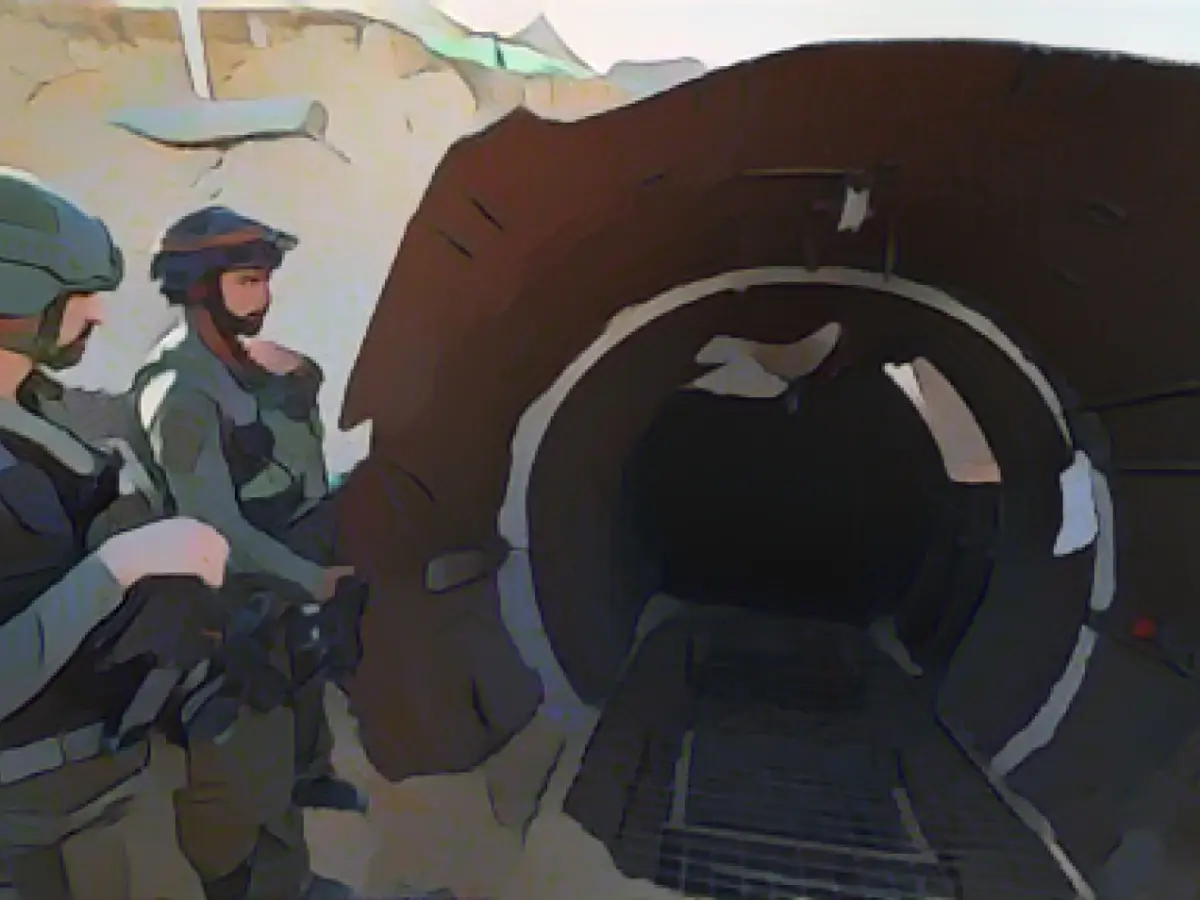Unearthed Hamas Tunnel: Largest Discovery in Gaza Strip's Conflict
The Israeli military recently made headlines by uncovering the largest Hamas tunnel in the Gaza Strip to date. This tunnel, part of a larger, intricate network, stretches out for an impressive four kilometers and nears the Eres border crossing. The construction of this tunnel, costing millions upon millions of dollars, took several years and was managed by Mohamed Jahja, the brother of Hamas leader Jahja Sinwar—a key figure in the group's major assault on Israel on October 7.
This elaborate tunnel system features its own sewage system, electrical wiring, ventilation, and even communication networks, complete with train tracks on the floor and reinforced concrete walls. A seemingly innocuous video released by the Israeli army depicts a small construction vehicle entering the tunnel and heavy machinery digging away on the tunnel's outskirts, all supposedly filmed by Hamas itself.
Richard Hecht, an army spokesperson, confirmed that the Israeli military found weapons stockpiled in the tunnel. He added that Hamas had dedicated immense resources to this project, tirelessly working towards their goal of attacking the state of Israel and its inhabitants. The Hamas-affiliated Ministry of Health estimates that a staggering 18,800 people have lost their lives in the Gaza Strip so far, though these figures cannot be independently verified.
Hamas's relentless pursuit of conflict with Israel has led to a ten-week-long standoff that has claimed thousands of lives, devastated homes, and sent shockwaves through the international community. In an ironic twist, the tunnel in question was deliberately constructed near the Eres crossing, a vital location utilized by Israel to regulate the movement of Palestinian workers and individuals seeking medical aid. Incredibly, Hamas's priority seems to lie in further escalating tensions with Israel, disregarding the welfare of its own people.
While Hamas continues its relentless assault, Israel attempts to neutralize their threats with escalating force, recently bombing targets in the Gaza Strip and launching ground offensives. Since the war began, the Israeli army has reported that 121 of its soldiers have been killed, with the Hamas-controlled Ministry of Health mourning the loss of 18,800 people.
The apocalyptic labyrinth of tunnels, known as the "Gaza Metro" by the Israeli military, originally emerged in response to the Israeli-Egyptian blockade following the 2007 Hamas takeover of the Gaza Strip. The tunnel network allowed people, goods, and weapons to pass freely through the Egyptian Sinai, playing a vital role in supplementing the limited resources available to Gaza's residents.
However, after their 2014 conflict with Israel, Hamas expanded their tunnel network and began using it to facilitate their rocket attacks. The West Point military academy estimates that there are now over 1,300 tunnels spanning a total length exceeding 500 kilometers. The Israeli military has since claimed to have discovered over 800 tunnels and destroyed approximately half of them, bringing renewed attention to the utility and deterrence capabilities of these subterranean passages.
Recent reports suggest that the Israeli military is considering an innovative solution to neutralizing these tunnels: flooding them with seawater from the Mediterranean. With a successful test already under their belts, it remains to be seen how Hamas will respond to Israel's escalating tactics and whether this new strategy will effectively curtail the reach and threat of the "Gaza Metro."
Taking a Deep Dive: Enrichment Data
The Hamas tunnel network, including the largest one discovered near the Erez border crossing, represents a unique and multifaceted aspect of the Israel-Hamas conflict in the Gaza Strip.
Tunnel Network Background
- Functionality: The tunnel network serves multiple purposes, facilitating the passage of people, goods, and military supplies. It allows Hamas to maintain operational secrecy, evade Israeli intelligence, and provide much-needed resources to Gaza's residents.
- Military Value: Tunnels have proven to be invaluable in Hamas's military strategies, enabling covert communication, intelligence gathering, and the preparation of surprise attacks against Israeli targets.
- Propaganda and Symbolism: The discovery of large Hamas tunnels often serves as a symbol of resistance and resilience, adding to Hamas's inflammatory rhetoric and propaganda efforts.
Humanitarian Impact
- Health System Collapse: The Israeli blockade, coupled with the use of tunnels for smuggling goods, has resulted in a severe lack of resources for Gaza's beleaguered health system. Non-combatant deaths have increased as a result.
In conclusion, the Hamas tunnel network, particularly the recently unearthed tunnel near the Erez border crossing, is a critical component of Hamas's military operations and serves as a powerful symbol of their resistance to Israeli control. It could have both short-term and long-term implications for the conflict as both sides continue to adapt their strategies in response to the other's military innovations.








